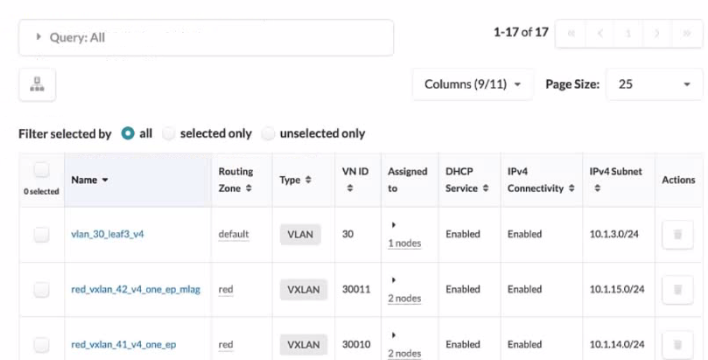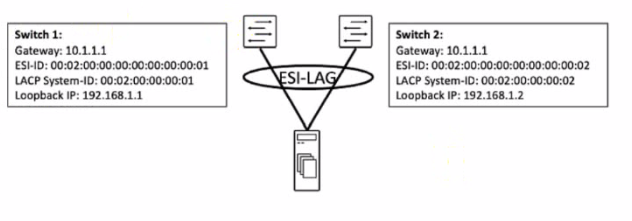Master Juniper Data Center Specialist JN0-480: Your Gateway to Network Excellence
Exhibit.

Referring to the exhibit, how do you display the IPv6 subnets lot all of the listed VXLANs?
Correct : B
Start a Discussions
You want to apply a configlet to a specific device using Juniper Apstr
a. Which two parameters would be used to accomplish this task? (Choose two.)
Correct : B, D
Start a Discussions
What does EVPN use lo identity which remote leaf device advertised the EVPN route?
Correct : A
EVPN uses a route distinguisher (RD) value to identify which remote leaf device advertised the EVPN route. An RD is a 64-bit value that is prepended to the EVPN NLRI to create a unique VPNv4 or VPNv6 prefix. The RD value is usually derived from the IP address of the PE that originates the EVPN route. By comparing the RD values of different EVPN routes, a PE can determine which remote PE advertised the route and which VRF the route belongs to. The other options are incorrect because:
B) a community tag is wrong because a community tag is an optional transitive BGP attribute that can be used to group destinations that share some common properties. A community tag does not identify the source of the EVPN route.
C) a route target value is wrong because a route target (RT) value is an extended BGP community that is used to control the import and export of EVPN routes between VRFs. An RT value does not identify the source of the EVPN route.
D) a VRF target value is wrong because there is no such thing as a VRF target value in EVPN. A VRF is a virtual routing and forwarding instance that isolates the IP traffic of different VPNs on a PE. A VRF does not have a target value associated with it.Reference:
RFC 9136 - IP Prefix Advertisement in Ethernet VPN (EVPN)
EVPN Type-5 Routes: IP Prefix Advertisement
Understanding EVPN Pure Type 5 Routes
Start a Discussions
Exhibit.

You are working to build an ESI-LAG for a multihomed server. The ESI-LAG is not coming up as multihomed.
Referring to the exhibit, what are two solutions to this problem? (Choose two.)
Correct : B, D
The LACP system ID on both devices must be the same. This ensures that the LACP protocol can negotiate the LAG parameters and form a single logical interface for the server.
The ESI ID on both devices must be the same. This ensures that the EVPN control plane can advertise the ESI-LAG as a single Ethernet segment and synchronize the MAC and IP addresses of the server across the devices.
The VLAN ID and VNI on both devices must be the same. This ensures that the server can communicate with other hosts in the same virtual network and that the VXLAN encapsulation and decapsulation can work properly.
Start a Discussions
What is the purpose of a Juniper Apstra rack?
Correct : B
A Juniper Apstra rack is a physical entity that contains one or more network devices, such as leaf nodes, access switches, or generic systems. A rack is used to organize and manage the network devices in the Apstra software application. A rack has the following characteristics:
The following three statements are incorrect in this scenario:
Start a Discussions
Total 65 questions